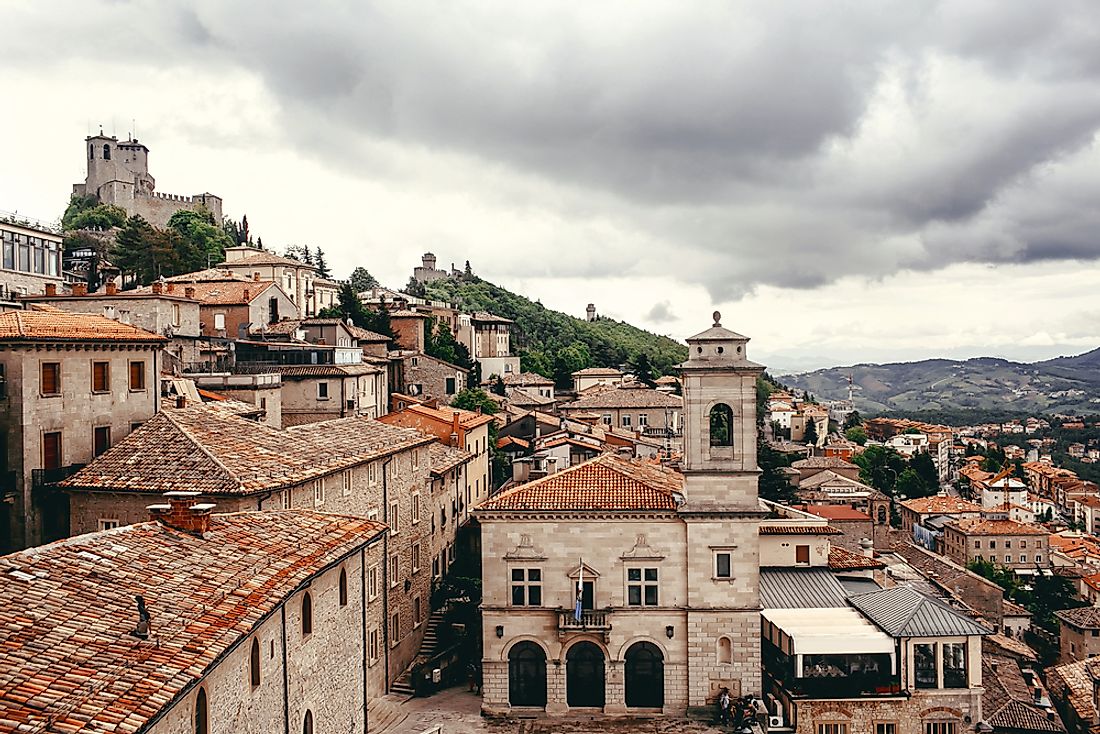The Smallest Economies in Europe

Europe is a continent comprising of 50 countries. After World War II, the European countries united to form the European Union. In 1999 the Euro was introduced as the official currency in the European Union. In 2016 the International Monetary Fund placed Europe’s economy as the third largest in the world. Nominal GDP looks at the economy of a country based on the total value of goods and services produced within a given year. By nominal GDP, the 15 smallest economies in Europe include San Marino, Montenegro, and Kosovo, Moldova, Armenia, Macedonia, Malta, Albania, Georgia, Bosnia and Herzegovina, Cyprus, Iceland, Estonia, Latvia, and Serbia.
Top 3 Smallest Economies in Europe
San Marino
San Marino has the smallest economy in Europe. In 2017, the country’s GDP stood at $1.551 billion which is equivalent to 0.00199% of the world’s nominal GDP ranking it number 170 in the world. San Marino is a small landlocked country surrounded by Northern Italy. According to a census in 2016, the population is slightly over 33,285. The service sector contributes significantly to the country’s GDP. In 2010, the service sector contributed 60.7% and industry was 39.2% while agriculture was 0.1%. The most prominent service sector is tourism and attracts 3.15 million visitors every year. The country gets many tourists as it has retained much of its old structure. The top agricultural produce is cheese and wine. The country also sells collectible stamps and coins. Although they have the smallest economy, by per capita GDP San Marino is one of the wealthiest countries in the world.
Montenegro
Montenegro is located in Southeastern Europe, and the country’s nominal GDP in 2017 was $4.185 billion, and this is 0.00537% of the world’s GDP putting the country at number 155 on the global map. The country’s GDP largely depends on the service sector which contributes to 76.8% of the total GDP. Agriculture and industries make up for the rest of the GDP. The economy of Montenegro has grown slowly due to the Yugoslav wars which came to an end around 2001. Montenegro’s economy has been recently growing since 2006 with the increased direct foreign investments. The industry sector has aluminum and steel industries as the largest contributors to the GDP. The country’s small size and high population with most areas inhabited, it has become hard to fully exploit the available minerals. The country is also a primary tourist attraction site in Europe.
Kosovo
Kosovo separated from Serbia in February 2008 to become the Republic of Kosovo. A census in 2016 showed the population to be 1,907,592 people. Kosovo’s economy is highly dependent on remittances from foreign states. Kosovo’s GDP in 2017 was about $6.809 billion and this is 0.00873% of the world’s GDP, putting the country at number 147. The economy in the country is a transition economy. Kosovo is rich in minerals like lead, bauxite, lignite, copper, and zinc and the export of the minerals contribute to the economy. The country is also a significant producer and exporter of wine. Kosovo imports more products than it exports.
Europe's Richest and Poorest Nations
Europe has a long history of high development, free market system, and trade. The northern part and western part of the continent have some of the world’s advanced economies and are wealthier and stable compared to the countries in Eastern and southern part of the continent. Most of the poorest countries in Europe are those that emerged recently from the former Soviet Union or civil war.
The Smallest Economies in Europe
| Rank | Country | Share of Global GDP (Percentage) |
|---|---|---|
| 1 | San Marino | 0.00199 |
| 2 | Montenegro | 0.00537 |
| 3 | Kosovo | 0.00873 |
| 4 | Moldova | 0.00950 |
| 5 | Armenia | 0.0138 |
| 6 | Macedonia | 0.0140 |
| 7 | Malta | 0.0143 |
| 8 | Albania | 0.0158 |
| 9 | Georgia | 0.0176 |
| 10 | Bosnia and Herzegovina | 0.0215 |
| 11 | Cyprus | 0.0252 |
| 12 | Iceland | 0.0295 |
| 13 | Estonia | 0.0300 |
| 14 | Latvia | 0.0356 |
| 15 | Serbia | 0.0484 |











